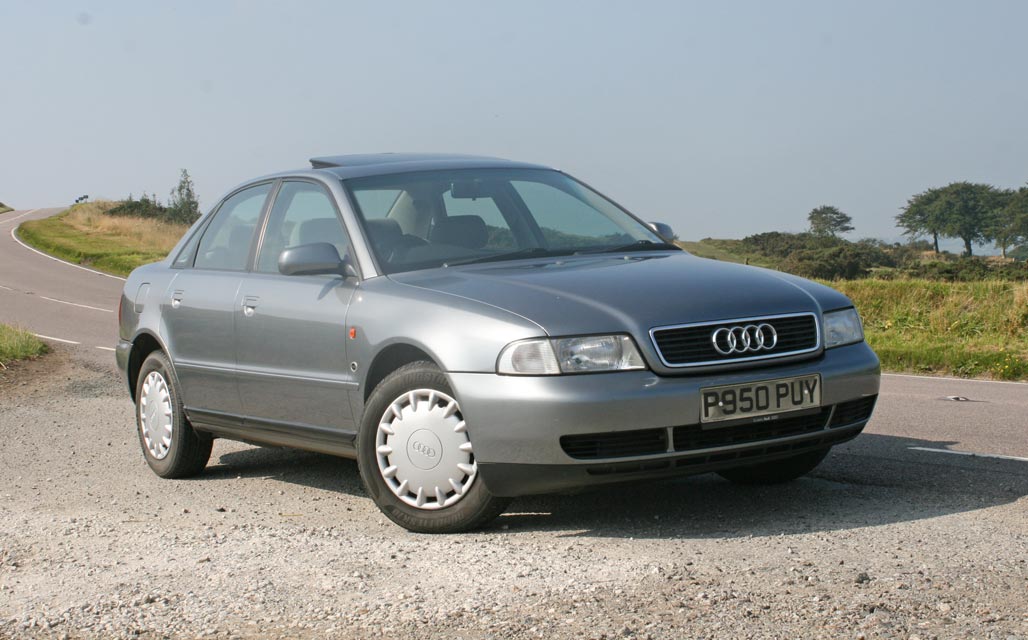Catalyst 8D01317017T/8D0178/WWOGermany/ICP was used in brand exhaust systems Audi Volkswagen, Skoda and Seat.
They are 43 cm long, although the weight of their contribution reaches up to 1.5 kg. Due to the oblong, symmetrical shape, narrowed outlet exits and cuts in the center of the cover, it resembles a croissant in its construction.

These catalysts were mounted in Audi A4/S4 with a capacity of 1.6 and 1.8 in 1995-1999, in gasoline-powered cars, as well as in the Volkswagen Passat 1.6 and 1.8. The catalysts were manufactured by the Ismeretlen company.
You can check the price of this catalyst outside the promotion here.
Audi A4 is a series of luxury D-segment cars produced by the German manufacturer Audi since 1994.
A4 currently has as many as 5 generations of the model and is still being produced, enjoying unflagging popularity. The construction of the car was based on the Volkswagen group project. The car was launched to replace the Audi 80. The A4 numbering in subsequent generations is a kind of continuation of the Audi 80 – B5, B6, B7, B8 and B9 lines. The last two of these are built on Volkswagen’s MLB platform, just like other Audi and even Porsche models.

What is specific to the model is the transaxle engine mounted on the back of the engine. The cars have front-wheel drive, some have “quattro” drive.
The model is available as a sedan and station wagon. The second and third generations also had a convertible version, while in the B8 version it became a variant of the Audi A5.
The first generation A4 (internal code: B5) was developed based on the platform Volkswagen Passat . It was put up for sale in January 1995 with a sedan body, while in May of the same year as a station wagon. The “Tiptronic” automatic sequential transmission was then introduced, linked to the Porsche 911 964.
The A4 sport versions are “S4“, and “RS4“, which have four-wheel drive. This version had a five-valve 2.7-liter V6 engine with two turbochargers and a maximum power of 265 hp, thanks to which the car accelerated from 0 to 100 km / h in 5.6 seconds. RS4, in turn, had an improved version of the same engine, which gave it 380 hp. The car reached 100 km / h in 4.7 seconds. By 2001, over 6,000 were produced.
The second generation A4 (internal code: B6) was put up for sale at the beginning of 2001. Initially, it was offered with a sedan body, and in mid-2001 as a station wagon. The A4 convertible replaced the old convertible, based on the Audi 80. Models with front-wheel drive and automatic transmission did not have a Tiptronic transmission, but a continuous variable transmission called Multitronic.

The second generation A4 differs from the previous generation in terms of raised side waist and rounded shapes. The construction resembled the largest Audi A6. The B6 is 69 mm longer, 33 mm wider and 13 mm taller than its predecessor. It is also 8.5 kg lighter than in the first generation.
In the second generation, it was decided that for the first time A4 would be offered with a Multitronic automatic transmission for vehicles with front-wheel drive. Unlike its predecessor, you can additionally put the gear in the “S” position, which provides a more sporting driving and driving experience.
At the beginning of 2005, the market entered improved Audi A4 B7. Despite the new name, the car was a modified, improved version of its predecessor. The acceleration configuration and suspension geometry were changed, the range of engines to be changed was changed, the ESP system with Bosh 8.0 was also introduced.
The fourth generation A4 (internal code: B8) was officially presented to the public at the 2007 2007 Frankfurt Motor Show as a sedan, and as a station wagon at the 2008 Geneva Motor Show.
Vehicles that are often compared to the B8 are the BMW 3 and Mercedes-Benz C-Class, as well as the Infiniti Q50, Citroën DS5 and Cadillac ATS.
B9 is the fifth generation of the Audi A4 car, produced to this day. It was officially shown at the end of June 2015 on the internet. In September 2015, an official presentation took place at the Frankfurt Motor Show. In the same year, the family variant was also shown in Goldene Lenkrad.
For the first time in A4 history, the Sedan and Family (Avant) versions were offered simultaneously from the very beginning.
B9 is based on the developed platform of the “MLB Evo” longitudinal modular building block from the group Volkswagen , at which in June 2015 the second generation of Audi Q7 was also created.

The biggest changes can be seen here inside the car. The visual side has been made similar to the second generation Audi Q7. The dashboard is fitted with a 7-inch or 8.3-inch vertical screen, which is responsible for the presentation of navigation and is used for entertainment while driving. The controls on the dashboard are arranged horizontally. However, the air conditioning control units are located below the ventilation holes.

 Phone number:
Phone number:  E-mail:
E-mail:  A stationary point:
A stationary point:  Getting from the customer:
Getting from the customer:  XRF analysis spectrometer:
XRF analysis spectrometer:  Valuation by numbers:
Valuation by numbers: 